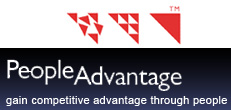“There is nothing so practical as a good theory” Kurt Lewin
Both technology and people are critical to the delivery of strategic objectives in organisations. However the balance seems to be in favour of satisfying the technological imperative to the neglect of harnessing the full potential of people to effect significant change across the organisation.
It is time to revisit the application of socio-technical theory in leading change in organisations.
This is the first of a series of articles on the critical role of socio-technical approaches to change in the complex modern world of organisations.
What is a Socio-technology System?
The free encyclopedia “Wikipedia” states:
“ The term socio-technical systems was coined in the 1960s by Eric Trist and Fred Emery, who were working as consultants at the Tavistock Institute in London.
In organizational development, socio-technical systems (or STS) is an approach to complex organisational work design that recognises the interaction between people and technology in workplaces. The term also refers to the interaction between society’s complex infrastructures and human behaviour. In this sense, society itself, and most of its sub-structures, are complex socio-technical systems.”
The dictionary of sociology published by Oxford University Press in 1998 extends the working definition of Socio-technical Systems:
“ socio-technical system A term devised to avoid the rather simplistic technological determinism in much mainstream organization theory. It was coined by the Tavistock Institute of Human Relations in Britain, and used in the theory of organizational choice which guided their programme of applied research.Though accepting the conventional wisdom of industrial sociology and the
The Dominance of Technological Determinism
People often feel dominated by the technological imperative. Experience suggests this is a major cause of resistance to change. Moreover they believe technological change is techno-centric – change is implemented as though the organisation exists only as a technical system – devoid of people.
This is particularly the case where centralised IT groups, with “Expert” cultures, impose technology on the wider organisation without any in-depth engagement with the people impacted by the new technology. People are instruments for interrogating and manipulating databases. Any people work eg satisfying customer needs, is considered separate to the core work of the organisation – which is satisfying the needs of multiple and diverse information technology systems.
In-Depth People Engagement
There is a paradox in many modern organisations. If IT groups are asked to explain their philosophy on change the discussion will inevitably revolve around some form of socio-technical systems approach. Similarly, if the same questions are discussed by HR groups, again the discussion will revolve around some form of socio-technical systems approach to change. Yet when feedback surveys are administered across these same organisations there is often considerable dissatisfaction expressed with the way technological change is implemented. Why is it so?
Is it possible that technological change is just so complex, coupled with significant time and budget constraints, that it is simply not possible to ensure quality engagement with the people impacted by the change? And is this compounded by the dominance of technological determinism whereby technology is King and people are mere instruments of the King?
Can organisations continue to just pay lip service to the implications of socio-technical systems? Or has the time arrived whereby organisations have no alternative but to tackle complexity head on and undertake in-depth engagement work with people. Rather than deny complexity it is not better to work with people to capture the whole complexity – people who know can help break down complexity into manageable chunks.
These questions and others will be explored further through references to research and the experience of practitioners in the field. Suggestions for new ways of tackling technological change within the context of the socio-technical systems framework will be discussed in future articles.
Dallas Burgess
© PeopleAdvantage Pty Limited 2008 All Rights Reserved
.

